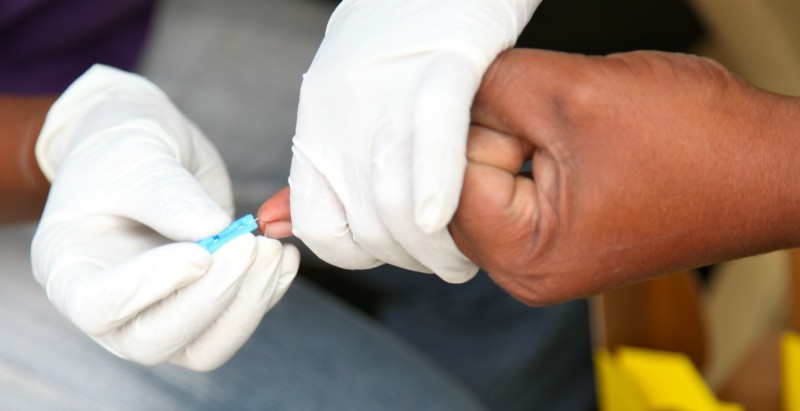User:Shawndouglas/sandbox/sublevel4
Often referred to as simply a medical or clinical laboratory, the clinical diagnostics lab performs tests on clinical specimens in order to get information about the health of a patient as it pertains to the diagnosis, treatment, and prevention of disease.[1] There are, however, additional “flavors” of the clinical diagnostics lab — including the anatomical and clinical pathology labs, the physician office lab (POL), and the integrative medicine lab, among others — that provide more specific clinical diagnostic services, requiring unique functionality from its informatics solutions.
The ordinary clinical diagnostics lab will seek a LIMS that can provide, at a minimum, the essential functionality listed in section 2.3. Additionally, the LIMS may need to provide features and functions specific to one or more clinical diagnostic subtypes, described below.
3.2.1.1 Anatomical and clinical pathology
In common medical practice, general pathology is mostly concerned with analyzing known clinical abnormalities that are markers or precursors for both infectious and non-infectious disease and is conducted by experts in one of two major specialties: anatomical pathology and clinical pathology. These two sciences have slightly differing workflows, and both bring with them the need for specific LIMS functionality to better address their unique workflows.
In addition to the essential features of a standard LIMS, the anatomical and clinical pathology lab will also be looking for a system that can (or allows users to)[2][3][4][5]:
- Configure the system using templates for histology and cytology case types.
- Add, view and link pre-generated organ maps and other diagrams.
- Add, view and link custom annotated pathology imaging.
- Track abnormal results and provide trending reports for monitoring disease populations.
- Support blocks and slides as specimens, with predefined descriptions.
- Document grossing examinations.
- Print slides and cassettes.
- Provide case management, reporting and test requisition.
- Provide specialty workflow for autopsy.
- Provide specialty workflow for gynecological cytology, including HPV + Pap co-testing for cervical cancer.
- Provide stain panels and histology worksheets.
- Support shared management of tissue samples among departments.
- Support EHR integration.
- Support polymerase chain reaction (PCR) workflow and reporting.
- Support pathology-specific reflex testing.
- Provide the option to combine same-day anatomical and clinical pathology results and reporting.
- Flag unusual cases for conference or committee reporting.
3.2.1.2 Physician office
On average, the physician office laboratory (POL) may not produce the same level of daily specimen throughput as a larger clinical diagnostic laboratory, but that should not detract from the benefits a POL can gain from a laboratory informatics solution. The POL employing laboratory informatics will still need much of the same standard clinical functionality mentioned prior, and the system will still need to comply with data management and sharing regulations such as those found with HIPAA and CLIA.
If there is any additional consideration to be made for the POL seeking a LIMS or LIS, it will be with how well a given solution is able to interface with the electronic health record (EHR) solutions the POL and its stakeholders are using. The POL should examine the potential integration capabilities of the LIMS solutions they are evaluating, as well as the currently used EHR and other clinical solutions. The lab should also be sure to consider any future potential of integrating their systems with other external data management systems, including those of other reference laboratories. A LIMS without the robust capability of integrating with other software systems only places additional burdens on the POL, now and into the future.
3.2.1.3 Integrative medicine
Integrative medicine is a type of personalized healthcare that takes a more holistic approach to the causes of illnesses. If an integrative medicine laboratory is using a laboratory informatics solution, their requirements will be nearly identical to a standard clinical diagnostic laboratory, meaning the standard clinical functionality mentioned in the second chapter will likely be suitable. If there is a major difference or required piece of additional functionality, it will have to do with a more extensive list of available tests and billing codes for them. This usually consists of expansions into nutritional, metabolic, and toxicity assays, as well as support for diagnostic imaging.[6]
References
- ↑ Sood, R. (2006). "Chapter 1: Laboratory". Textbook of Medical Laboratory Technology. Jaypee Brothers Publishers. pp. 01–28. ISBN 818061591X. https://books.google.com/books?id=hpNhAQAACAAJ.
- ↑ "Anatomic Pathology". LabWare, Inc. 2021. https://www.labware.com/industries/healthcare#anatomic. Retrieved 18 November 2021.
- ↑ "Sunquest CoPathPlus". Sunquest Information Systems, Inc. 2021. https://www.sunquestinfo.com/software-and-services/copathplus/. Retrieved 18 November 2021.
- ↑ "NovoPath: Redefining Laboratory Information Systems". NovoPath, Inc. 2021. https://www.novopath.com/. Retrieved 18 November 2021.
- ↑ "TD HistoCyto". Technidata SAS. 2021. https://www.technidata-web.com/en-gb/solutions-services/solutions/histopathology. Retrieved 18 November 2021.
- ↑ Bralley, J.A.; Lord, R.S. (2008). "Chapter 1: Basic Concepts". Laboratory Evaluations for Integrative and Functional Medicine (2nd ed.). MetaMetrix Institute. pp. 1–16. ISBN 0967394945. https://books.google.com/books?id=CpXVAwgOv7sC&pg=PT11.










